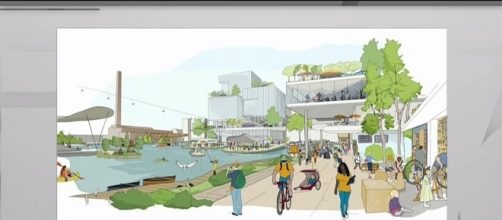There is a steadily building buzz around the plan by online retailer Amazon to build a new corporate headquarters – HQ2 – in a North American city that passes their criteria and can present them the best bid. Only a day is left before the company announces its decision. It is a fairly major deal after all, so if Google is of a mind to compete against that megaproject, how would they do it then? Perhaps the construction of a model “neighborhood of the future” might do the trick, and even then, Google’s parent company Alphabet will not have to do a “city audition” for the site.
Toronto, Canada is where this urban project is going to take root.
Project Quayside
This ambitious project is a joint collaboration between the city of Toronto and Sidewalk Labs, a subsidiary of Google’s Alphabet Company which encompasses other divisions such as self-driving car developer Waymo. Sidewalk Labs is a firm specializing in urban renovation, and their project on the Toronto Eastern Waterfront, southeast of downtown, will be a sterling example of a model neighborhood that encapsulates life in the 21st Century. And yes, in the manner of Amazon, Alphabet is planning to relocate Google’s Canada headquarters in the new “Quayside” neighborhood once it is completed.
An initial phase of the construction and pilot testing for Quayside that will run Sidewalk Labs, based in New York, costs about $50 million worth in investments.
Its chief executive Dan Doctoroff is very confident about the city site they have chosen for the Quayside project. “We looked all over the world for the perfect place to bring this vision to life and we found it here in Toronto,” he said during a press event on Tuesday, October 17 at Corus Quay. Also present for the occasion are Alphabet chairman and CEO Eric Schmidt, as well as Canadian Prime Minister Justin Trudeau.
Clean and green
Sidewalk Labs intends to make the Quayside model neighborhood in Toronto a truly convenient and habitable area, so they are taking steps to cut down on local pollution and landfill waste as well as shorten commute times to the site. The building constructed and trees planted in the neighborhood will be designed and positioned to do triple duty in breaking up strong gusts of wind, providing shade during hot sunny weather, and shelter in times of rain.
Alphabet envisions Quayside as a neighborhood built “from the internet up,” and proposes area-wide high-speed communications alongside low-bandwidth online connectivity. Low to zero pollution could also be maintained by having intra-neighborhood travel be facilitated by footpaths, bike lanes, and usage of shared electric vehicles. Quayside’s potential as a new hybrid residential/commercial hub for Toronto is seen by the Canadian government as a solid model for a new philosophy in urban land development.


